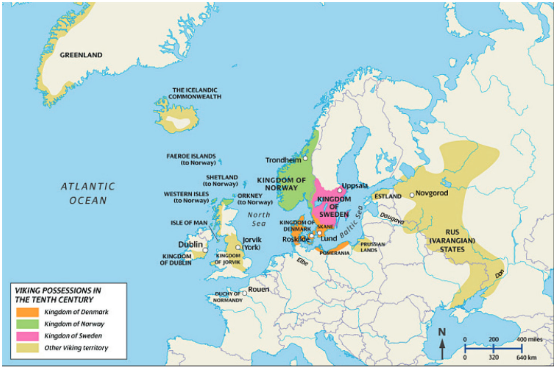

The Viking Influence on Russia
In the 800s C.E., Vikings began traveling east from Scandinavia into the land between the Baltic Sea and the Black Sea. These people began to settle along the many rivers and live with the native Slavs. These settlements helped trade routes and cities to develop.

Over the years, the Vikings integrated with the Slavs and were eventually invited to govern them. By the end of the 800s C. E., Kiev became the central city in Russia. Kiev was important because its location made it easy to trade to the Black Sea and to Constantinople. The development of these extensive trade routes allowed Russia to grow in size and power.
Russia and the Byzantine Empire

Over hundreds of years, people from the Byzantine Empire traded and developed alliances with people in the north along the trade routes between the Black Sea and Baltic Sea. Byzantine merchants traveled north and traded with the Rus, a group of people living in modern day Russia. Also, Eastern Orthodox missionaries brought Orthodox Christianity to the area, and it was accepted by Russia and much of Eastern Europe. The Rus benefited greatly from their contact with the Byzantine Empire. As contact increased, the Russians adopted aspects of Byzantine culture like church architecture, religious art (Mosaics and Icons), and saw the creation of the Cyrillic alphabet for the Slavic languages by St. Cyril.

he Rus were conquered in the 1200’s by the Mongols, and Russia became a part of the largest land empire in history. Ivan III, or Ivan the Great, a leader of Moscow, challenged Mongol rule in the 1400’s and eventually became the leader of an independent Russia or Tsar(Czar). As Constantinople became overrun by Turks and other invaders, the Tsars pushed for the Patriarch to move from Constantinople to Moscow. This migration made Moscow a center for Eastern Orthodox Christianity.
Originally published by Loudon County Public Schools under a public domain license.






